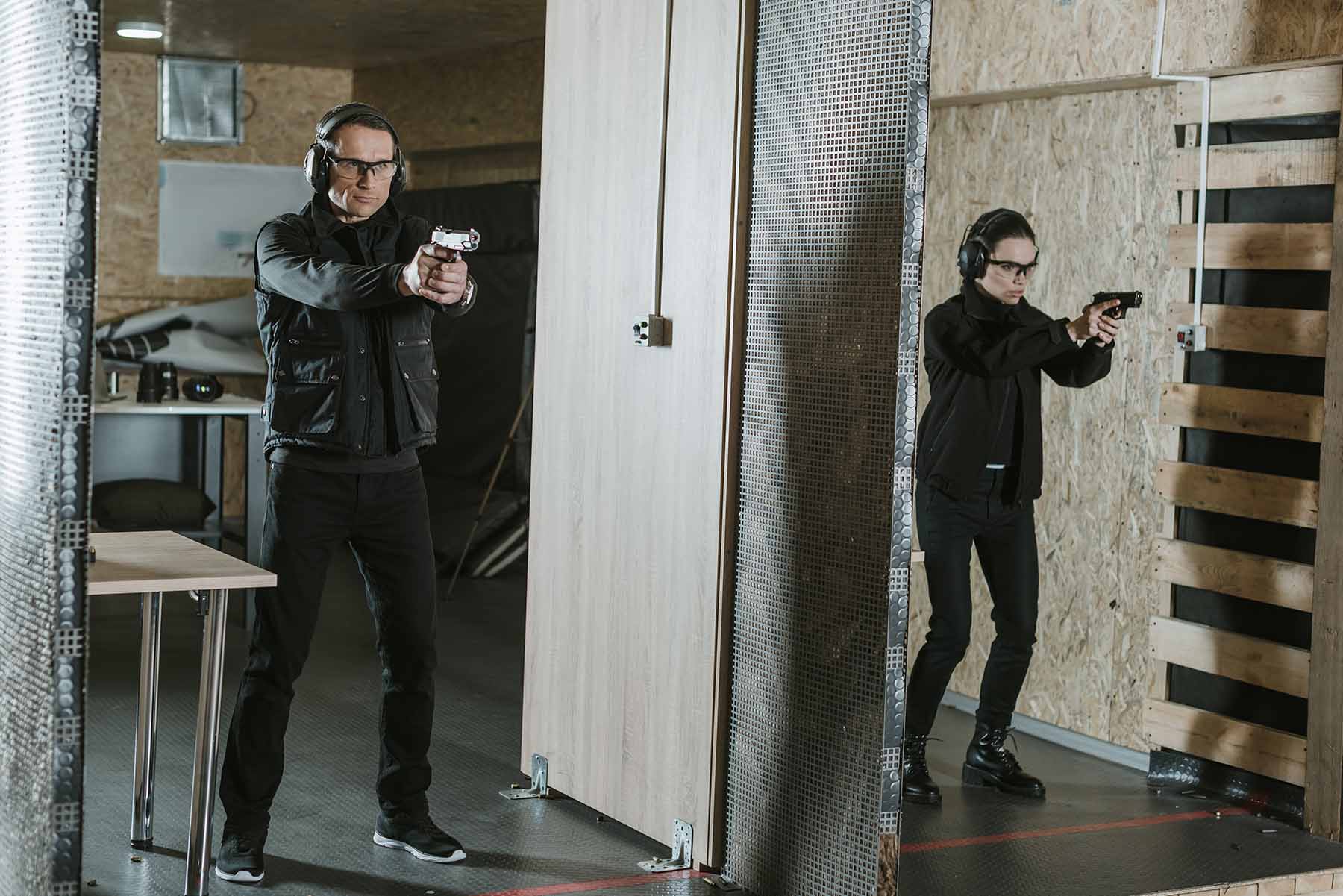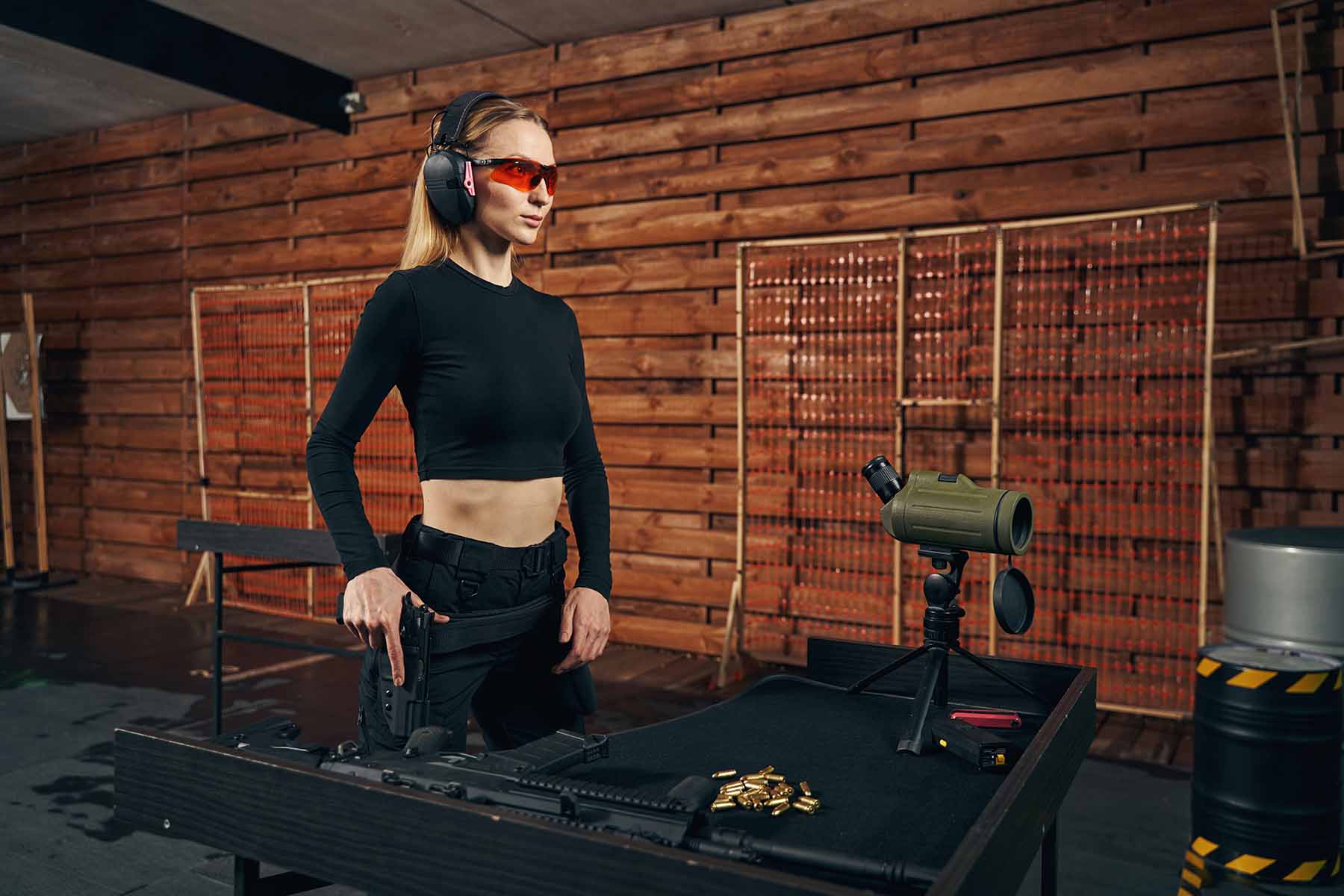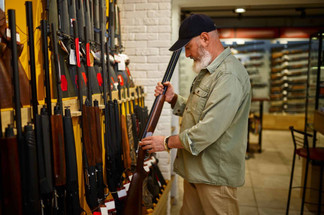Jun 25th 2024
Essential Gun Parts Every Firearm Owner Should Know About
Essential Gun Parts Every Firearm Owner Should Know About
With their rich history and diverse applications, firearms have always been more than just tools. They are a symbol of power and responsibility. Knowing the fundamental components of a gun, whether you are an experienced shooter or a newbie, will improve your shooting experience, safety, and upkeep. This knowledge not only ensures the longevity of your firearm but also allows you to engage with the shooting process fully.
Before starting your shooter training course, you should check this article. We will delve into the ten essential gun parts every firearm owner should know, provide an overview of the key components of firearms, and help you familiarize yourself with crucial gun parts to boost your confidence and competence in handling these powerful tools.
Ten Fundamental Gun Parts Every Firearm Owner Should Know
Firearms are intricate machines composed of several critical parts, each playing a vital role in their functionality. Let's explore the ten essential gun parts that every firearm owner should be well-acquainted with.
1. Barrel
The barrel is a crucial component of any firearm. It is the metal tube through which the bullet travels upon firing. The quality and condition of the barrel significantly affect accuracy and range. Regular cleaning and maintenance are necessary to prevent fouling and corrosion.
2. Receiver
The receiver is the part of the firearm that houses the operating parts. It is the core of the gun, containing the trigger mechanism, hammer, and firing pin. Understanding the receiver's function is essential for troubleshooting and performing repairs.
3. Stock
The stock provides stability and support when aiming and firing a gun. It can be made of wood, plastic, or composite materials. A well-fitted stock enhances accuracy and comfort during shooting.
4. Trigger
The trigger initiates the firing process. It requires careful handling, as improper use can lead to accidental discharge. Understanding trigger mechanics can improve shooting precision and safety.
5. Firing Pin
The firing pin strikes the cartridge's primer, igniting the cartridge and firing the bullet. It is a small but essential part of the firing mechanism, and regular inspection and maintenance are necessary to ensure reliability.
6. Magazine
The magazine stores ammunition and feeds it into the chamber. Knowing how to load, unload, and maintain the magazine is crucial for efficient firearm operation.
7. Slide
The slide houses the barrel and recoil spring in semi-automatic pistols. It moves back and forth to eject spent cartridges and load new ones. Familiarity with the slide's function is important for proper maintenance and handling.
8. Safety Mechanism
The safety mechanism prevents accidental discharge. It can be a manual switch or an internal mechanism. Understanding how to engage and disengage the safety is vital for safe firearm handling.
9. Sights
Sights aim the firearm. They can be iron sights, scopes, or red dot sights. Proper alignment and maintenance of sights are essential for accuracy.
10. Muzzle
The muzzle is the front end of the barrel from which the bullet exits. It should always be pointed in a safe direction. Regular inspection can prevent damage and ensure accuracy.
Mastering these ten essential gun parts is fundamental for any firearm owner. Each component is necessary for a firearm's safe and efficient operation. Understanding these parts improves your shooting skills and enhances safety and maintenance practices.

How to Familiarize Yourself With Crucial Gun Parts
Familiarizing yourself with the crucial parts of a firearm is an essential step in becoming a responsible and proficient gun owner. This knowledge not only aids in safely operating and maintaining your firearm but also enhances your shooting accuracy and overall experience. Here are some effective strategies to help you get acquainted with the components of your firearm.
Read the Owner's Manual
The owner's manual is an invaluable resource for any firearm owner. It provides detailed information about your specific firearm model, including the names and functions of its parts. Spend some time going over the manual cover-to-cover. Begin by identifying every component mentioned in the handbook, especially mindful of the accompanying diagrams and explanations. Carefully adhere to the maintenance guidelines to ensure every element is in ideal condition.
Hands-On Practice
Nothing beats hands-on experience when it comes to learning about your firearm. Safely disassemble and reassemble your gun to get a practical understanding of its components. Before attempting to disassemble your firearm, make sure it is unloaded. Carefully disassemble the firearm using the handbook as a guide. As you disassemble the gun, take note of each part's location and function, helping you understand how the components work together. Practice reassembling the firearm until you can do it confidently, reinforcing your knowledge of each part.
Enroll in a Firearm Safety Course
A firearm safety course is an excellent way to gain professional instruction on firearm components and handling. Many courses offer detailed explanations and hands-on training. Learn from qualified instructors who can share knowledge and address inquiries regarding your firearm's components. These classes frequently address safe handling and operation methods, improving your overall gun proficiency.
Utilize Online Resources
The internet is a treasure trove of information for firearm enthusiasts. Use online resources to supplement your learning. Watch videos on platforms like YouTube that demonstrate your specific firearm model's disassembly, cleaning, and maintenance. Join firearm forums where you can ask questions and share experiences with other gun owners.
Visit a Gun Range
Spending time at a gun range allows you to handle and operate your firearm in a controlled environment. Many gun ranges have experienced staff who can offer advice and assistance as you practice with your firearm. Applying your knowledge in a real-world setting helps solidify your understanding of your firearm's parts and functions.
Familiarizing yourself with the crucial parts of your firearm is an ongoing process that requires dedication and practice. You can develop a thorough understanding of your firearm by using resources like the owner's manual, practical experience, firearm safety courses, online tutorials, and gun range visits. Possessing this knowledge makes you a more responsible and skilled firearm owner, improving your safety and maintenance abilities and your shooting experience overall.

Understanding Safety Practices in Carrying Firearms
Carrying a firearm comes with immense responsibility. Ensuring your own safety and that of others requires a thorough understanding of proper safety practices.
Safety is paramount when it comes to carrying firearms. Whether you carry for self-defense, as part of your profession, or during recreational activities, understanding and adhering to safety practices is crucial. These practices prevent accidents, enhance your control over the firearm, and ensure that you carry it in a manner that respects the safety of those around you.
Proper Holster Use
Choosing the appropriate holster is essential for carrying a gun safely. A good holster ensures the firearm is secured, providing easy access while preventing accidental discharge. Ensure the holster you select fits your gun precisely and is constructed of sturdy materials. Positioning the holster correctly on your body is also crucial; it should allow you to draw and reholster your firearm without compromising safety. Ensure your holster is regularly checked for wear and tear and replaced if necessary to ensure a secure fit.
Maintaining Situational Awareness
Carrying a firearm requires heightened situational awareness. You must constantly be aware of your surroundings and their potential risks. This awareness includes being mindful of how you carry yourself, avoiding places where carrying a firearm might be prohibited, and being prepared to respond appropriately to various scenarios. Training in situational awareness can significantly improve your ability to make safe and effective decisions while carrying a firearm.
Securing Your Firearm
Your firearm should be securely stored to prevent unauthorized access when not in use. Securing your firearm is particularly important if you have children or others in your household who should not have access to the firearm. Using a gun safe, lockbox, or trigger lock can provide an added layer of security. Additionally, when you are out and about, never leave your firearm unattended or in a location where others can easily access it.
Regular Training and Practice
Maintaining proficiency with firearm handling and safety procedures requires regular training. Attend training sessions led by qualified instructors to support your knowledge of the most recent safety procedures and to keep your skills sharp. Practicing drawing and holstering your firearm and running through various scenarios can help you respond effectively in real-life situations. Training also builds muscle memory, reducing the likelihood of mistakes during high-pressure situations.
Understanding and Following Legal Requirements
Each region has specific laws and regulations governing the carrying of firearms. You are responsible for being fully aware of these laws and adhering to them strictly. Legal requirements can include obtaining the necessary permits, understanding where you can and cannot carry your firearm, and knowing the legal implications of using your firearm in self-defense. Ignorance of the law is not a valid defense, so take the time to educate yourself and ensure compliance.
Understanding and implementing safety practices in carrying firearms is an ongoing commitment that enhances your responsibility and effectiveness as a firearm owner. Securing your firearm, using holsters correctly, staying aware of your surroundings, receiving regular training, and abiding by the law are all essential elements of safe firearm carrying. By prioritizing these procedures, you promote a culture of responsible gun ownership and protect your safety and those around you.
Understanding the Key Components of Firearms
Understanding the essential parts of a firearm is fundamental for any gun owner. This knowledge guarantees accurate shooting, safe handling, and efficient maintenance. You can become a more informed and responsible gun owner by becoming familiar with the ten essential gun parts, the major parts of firearms, and the crucial parts of your particular firearm. Moreover, implementing safety practices in carrying firearms is crucial to prevent accidents and ensure your well-being and that of others. Through continuous learning, regular training, and adherence to safety guidelines, you can confidently and competently handle your firearm, making your experience safer and more enjoyable.
Stay informed and empowered with valuable insights to enhance your skills and ensure safety by reading our Gunline Shooting blog today!

